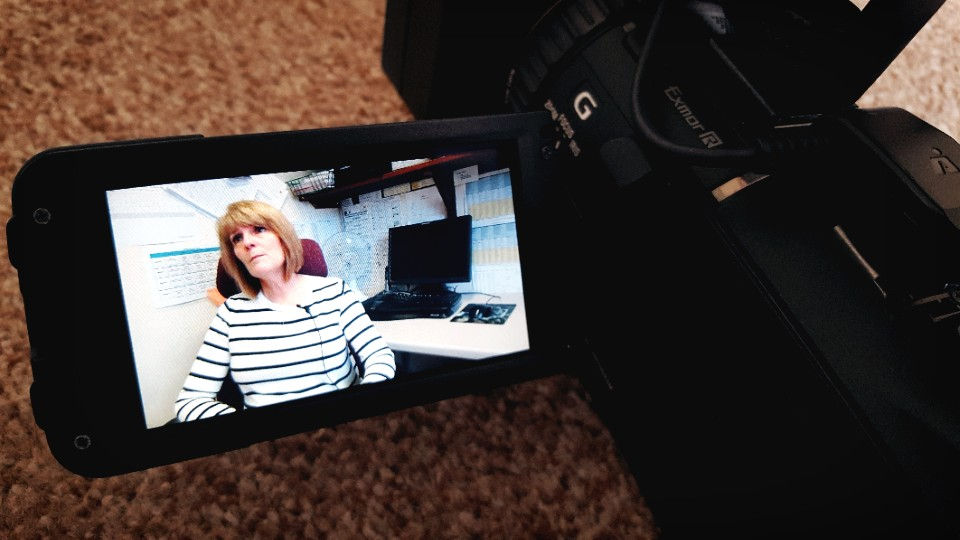A Montessori Worker
Post-Production meeting
Megan Dear has planned to produce a documentary film for her final project, and she asked me to be part of her production team as a colourist since she liked the colour correction in my previous work ‘VS’; the experimental documentary. This is my first time to undertake a responsibility for the post-production in a student group work, and the skills trained whilst producing my own project in the second year helped me a lot in doing colour correction for this production.
By the time she asked me for my help, she had already finished filming her documentary. She showed me some of her footage to get an opinion on the camera composition. I could see that she followed the Rule of Third in her filming so that it was quite nice and comfortable to watch. Overall, it was well filmed with not many problems or errors to fix in the post-production stage.

However, any filming requires a good colour correction and grading, even for a documentary to captivate the audience’s attention. My job as a colourist is to enhance the original clips to make them look better and more interesting. To enhance my technical knowledge for colour correction, I went into a research on how documentary colour correction/grading are usually done and what kind of colour grading the professionals use in the industry, prior to the meeting with her.
The documentary looks into the life and work of women who have chosen to work in childcare Montessori’s. In our meeting before the Easter break, I asked her preference or certain look that she is looking for. As it was still in an early stage of editing, she was not very sure of what colour grading she was looking for. So, we agreed to wait until she has a rough cut, so that we will be able to figure out what mood fits the documentary.
In our brief conversation about the project during the Easter break, she hoped to keep the original colour of the clips just with an adjustment of brightness, rather than having the artificial colour correction that might create a fake look on the footage. Then I offered a suggestion that we should add a hint of yellow on the clips to add warmth, because she has a lot of green sceneries and the topic is connected to children. She is happy to try an experiment with my suggestion, so we agreed to sit down together and spent some time to find the right look she would be pleased with.

She also has sent me the first 25 seconds of rough cut that she has done so far over the Easter break. The colour was generally good and there were not many of the overexposed clips.


Colour grading/correction process
Megan and I sat down together to see the final cut of her documentary. Watching the whole documentary helped me to grasp Megan’s need in terms of the mood and the colour scheme. I asked her if she had any preference of colour correction/grading software and she wanted me to work with the Final Cut pro, the editing software that she had been using for her edits. As the Final Cut pro only has a basic colour grading/correction programme, I recommended her to use DaVinci Resolve but she only wanted a minimal colour correction so I agreed to use what the director wanted me to.
At first, I started with the exposure of the footage as there were mixture of the indoor and outdoor footage. Working on the black and white level first, I could see the immediate improvement on the clips. Then I moved on to colour grading where I added the main tint of yellow as her documentary is about childcare, which produced lots of sunrays on the green scenery. The director loved the yellow tint and, exclaimed in delight at the outcome saying 'It perfectly reflects the right mood of the documentary!'. I am glad that my suggestion of adding a tint of yellow worked well.
During the process, there were a few minor problems of matching the interview footage as the sun was in and out thought-out the interviews. We could not match all of them with a same colour and exposure but I managed to match the colour correction of the interviews with the cutaways. Although all the interview footage does not exactly look the same in colour, it flows nicely with my colour correction matched with the cutaways between the interviews.
We finished the whole work in about an hour or so, and we both are very happy with what we have achieved through the editing process. Such subtle changes in colour correction/grading helped to enhance the documentary mood. Overall, it was relatively a relaxed and easy job compared to other projects that I have previously worked on and I really enjoyed the project.









